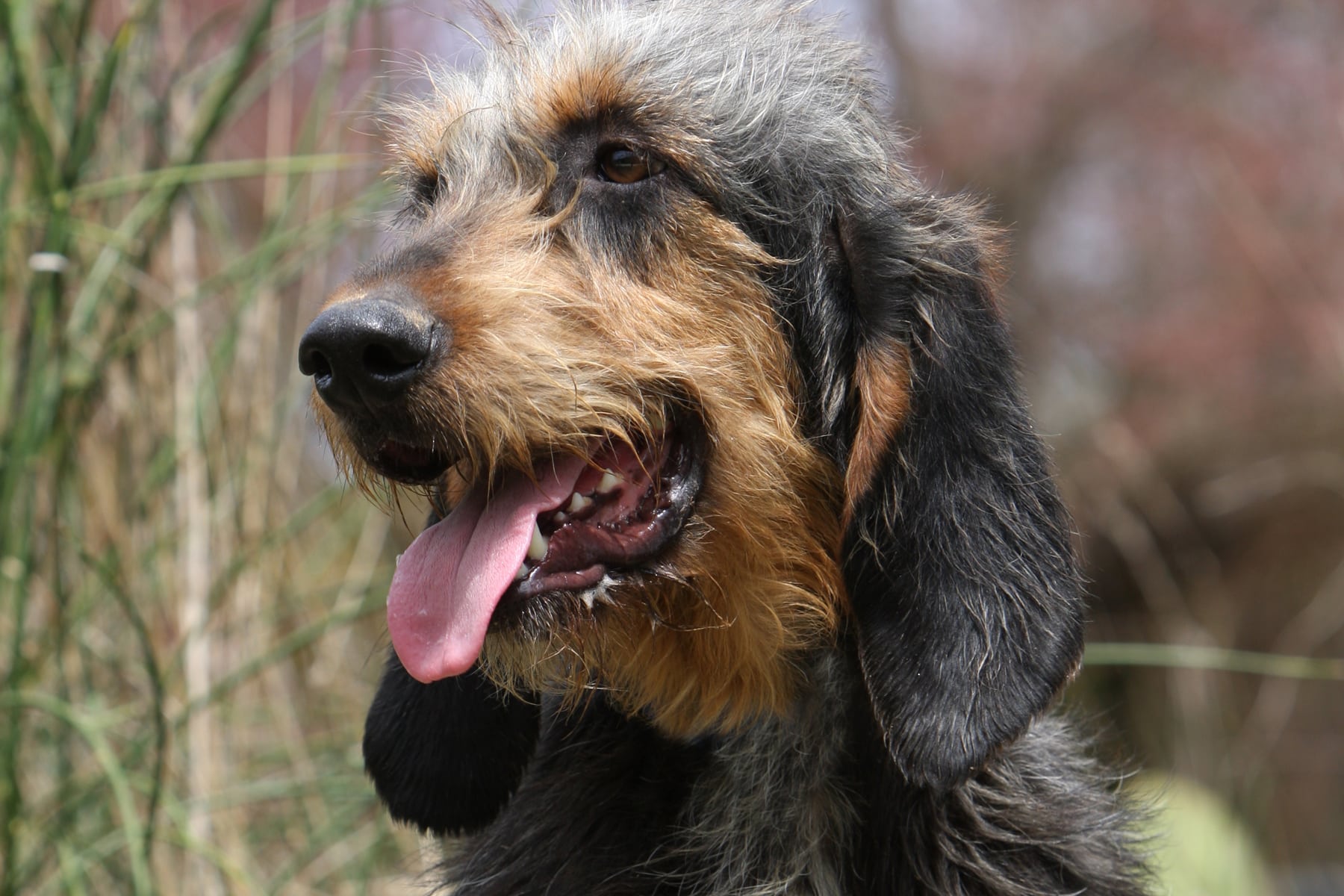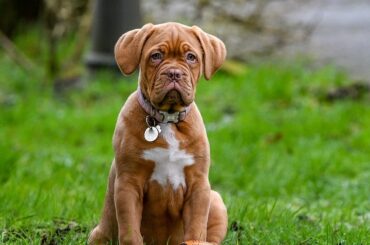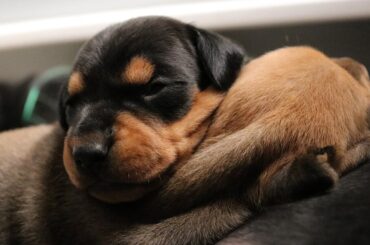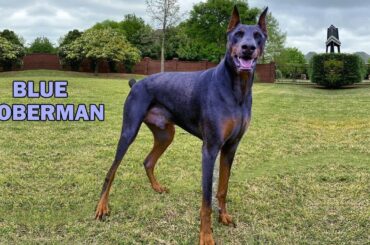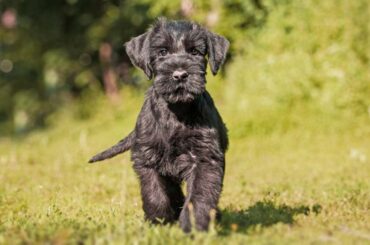Table of Contents
A Comprehensive Guide to the Griffon Nivernais Breed
Amidst the rolling hills and charming villages, emerges a canine companion of undeniable charm and unwavering loyalty, the Griffon Nivernais. This breed, steeped in history and adorned with distinctive features, captures the hearts of dog enthusiasts with its unique blend of elegance and grit.
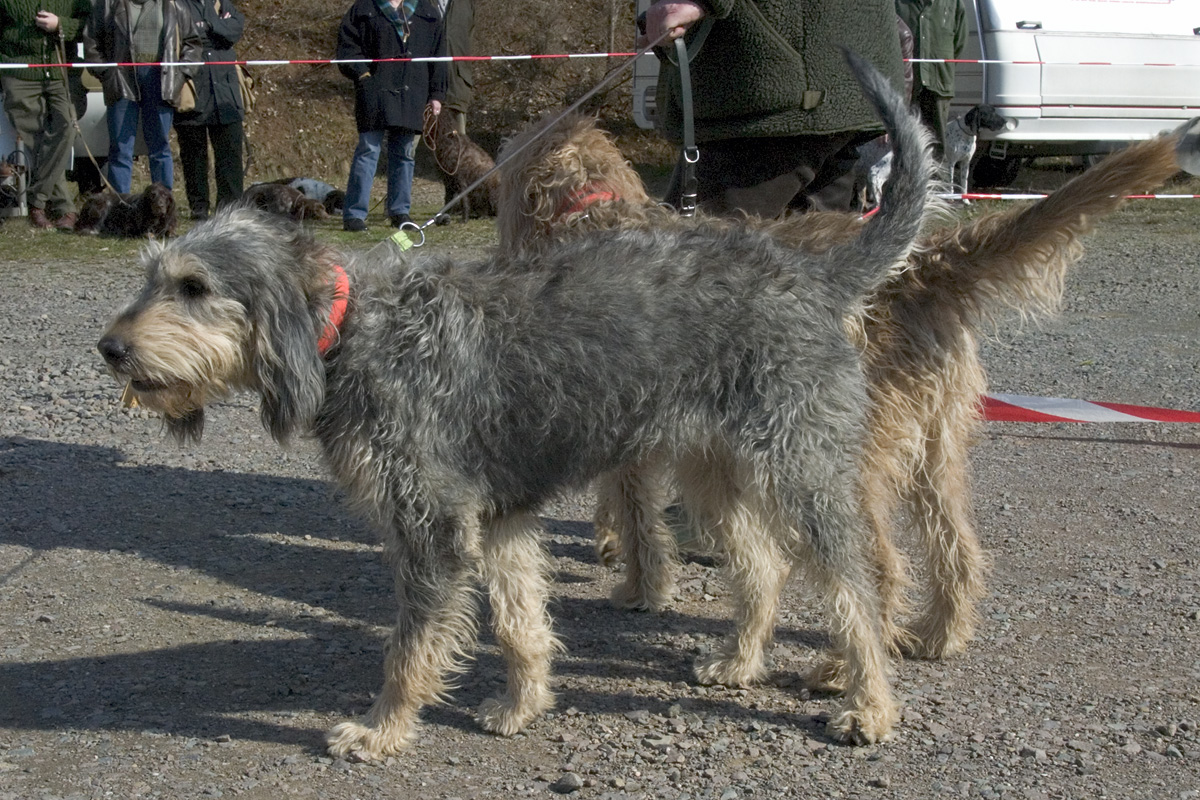
In this exploration of the Griffon Nivernais, we embark on a journey to unravel the layers of this French canine treasure. From its roots in the verdant Nivernais region to its role as a skilled hunting companion, the Griffon Nivernais stands as a testament to the harmonious blend of form and function in the world of dog breeds.
Beyond its physical allure, we delve into the personality traits that make the Griffon Nivernais a captivating addition to families and individuals alike. What endearing qualities distinguish this breed, and how do its characteristics contribute to a harmonious relationship with its human companions? Join us as we navigate the rich tapestry of the Griffon Nivernais experience, from its historical significance to its contemporary role as a beloved and noble four-legged friend.
About and History of Griffon Nivernais
The history of the Griffon Nivernais is deeply rooted in the rustic landscapes of the Nivernais region in France, where its journey as a distinct breed began centuries ago. Developed primarily for hunting purposes, the breed’s lineage can be traced back to the crossbreeding of various French hounds and local scent hounds. This deliberate amalgamation aimed to produce a dog with an exceptional sense of smell, agility, and the endurance required for the demanding terrains of the French countryside.
As the breed evolved, the Griffon Nivernais gained popularity among French nobility and hunters due to its remarkable hunting skills, particularly in tracking small game such as rabbits and other elusive prey. Its keen sense of scent, coupled with an agile and determined disposition, made it an invaluable asset to hunters navigating the diverse landscapes of Nivernais.
The formal recognition of the Griffon Nivernais as a distinct breed came in the 1920s when breed standards were established, solidifying its unique characteristics and confirming its place among the diverse array of French hunting dogs. Despite its historical ties to hunting, the Griffon Nivernais has seamlessly transitioned into the role of a companion animal, where its amiable nature and distinctive appearance have endeared it to dog lovers far beyond the fields of its origin.
Today, the Griffon Nivernais continues to embody the rich heritage of its French roots, captivating both hunters and families alike with its graceful demeanor, distinctive wire-haired coat, and an enduring spirit that reflects its storied history.
Breed Overview
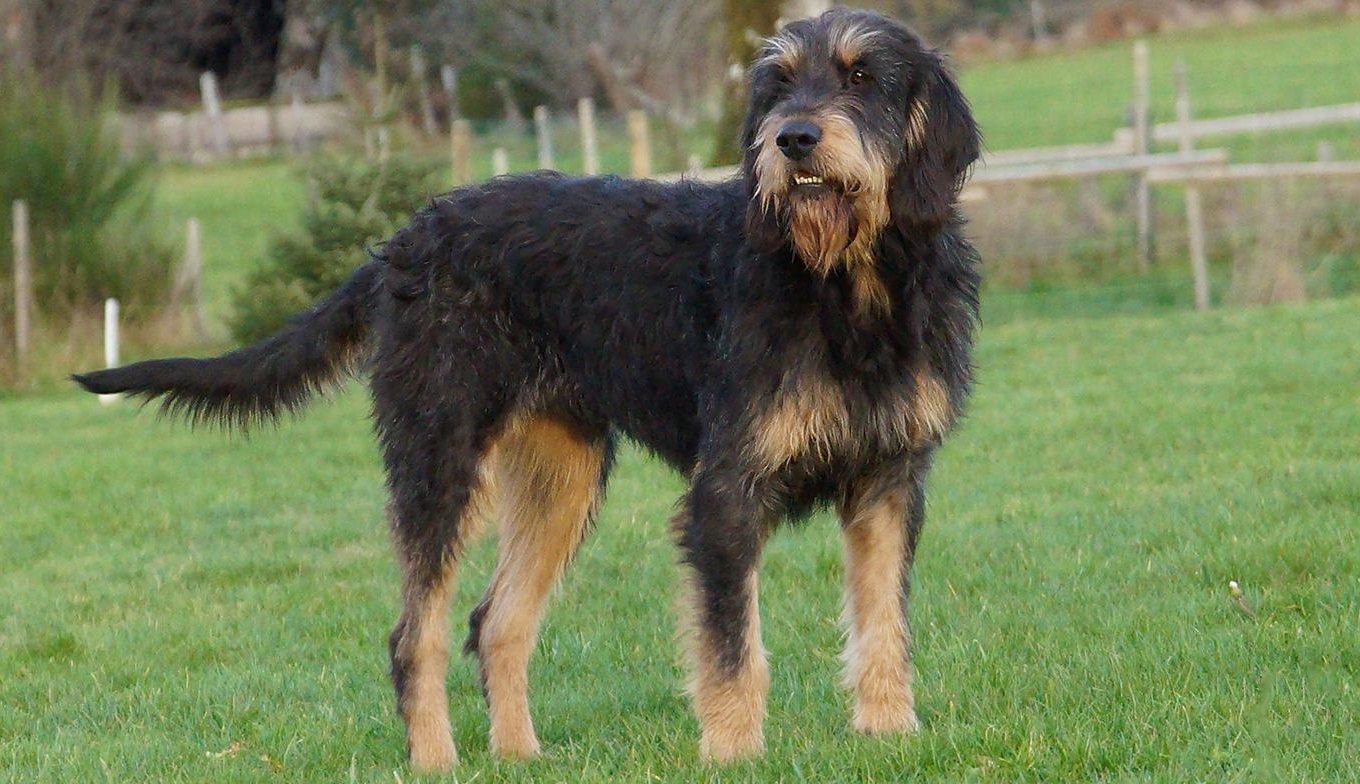
Origin: France
Group: Hound
Height: 20.5 to 23.5 inches (female), 21.5 to 24.5 inches (male)
Weight: 45 to 60 pounds
Coat: Long, rough
Coat Color: Wolf gray, blue gray, or gray grizzle with/without tan, white, and black markings
Temperament: Independent, fearless, affectionate
Life Span: 10 to 14 years
Body Characteristics of Griffon Nivernais
The Griffon Nivernais is a medium to large-sized dog with awesome physical characteristics that contribute to both its aesthetic appeal and functional capabilities.
Size and Proportion
Griffon Nivernais typically stands between 20 to 23 inches (50 to 58 cm) at the shoulder. The breed exhibits a well-balanced and proportionate build, conveying strength and agility.
Head
The head is relatively large and well-proportioned to the body. It features a moderately broad skull with a defined stop. Griffon Nivernais are known for their expressive, dark brown eyes that exude intelligence and alertness.
Body
The body is compact and well-muscled, with a level topline. Griffon Nivernais chest is deep and broad, providing ample lung capacity for endurance during activities like hunting.
Coat
The Griffon Nivernais is known for its distinctive rough, wiry coat that provides protection against harsh weather conditions. Coat colors may include various shades of orange and fawn, often with a grizzled appearance.
Muzzle
The muzzle is strong and moderately long, tapering towards the nose. Griffon Nivernais typically has a well-developed nose with wide nostrils.
Attitude and Temperament
Griffon Nivernais is known for its keen intelligence and quick learning ability. This trait makes them responsive to training and adaptable to various situations. They tend to have a degree of independence, a trait that stems from their history as hunting dogs. While they are loyal to their owners, they may exhibit a certain level of self-reliance.
Griffon Nivernais forms strong bonds with their human companions. They are known for their loyalty and devotion, making them excellent family dogs. With a strong hunting background, they are naturally alert and watchful. They have a keen sense of their surroundings, making them effective watchdogs.
Their hunting heritage has instilled in them a degree of courage and determination. Griffon Nivernais can be brave in the face of challenges, and their spirited nature adds to their charm. And despite their strong hunting instincts, Griffon Nivernais can adapt well to different living environments, including both rural and urban settings, as long as they receive adequate exercise and mental stimulation.
Lastly, Griffon Nivernais often maintains a playful demeanor, enjoying interactive play with their family members. This trait contributes to their appeal as affectionate and entertaining companions. Like many intelligent breeds, Griffon Nivernais can exhibit a stubborn streak. Consistent and positive training methods are essential to guide their behavior effectively.
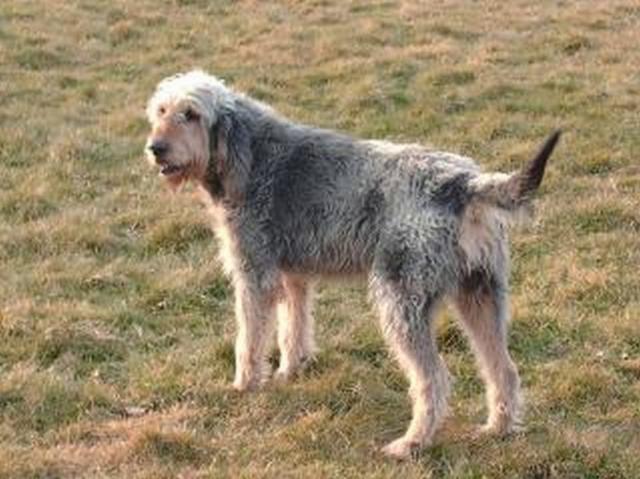
Trainability
Griffon Nivernais are easy to train to sniff and track, but different outcomes can be obtained when you ask them to perform unfamiliar tasks like agility or obedience training. Due to their reputation for independence, this breed is frequently unwilling to comply with unpleasant demands. It is ideal for firm trainers with prior experience with comparable hound breeds, due to their willful nature.
If their trainer is clear and consistent in their guidance, an intelligent dog like this will appreciate them. When a trainer’s wishes are not honored, they will frequently be disregarded, with Griffon Nivernais content to carry out their assigned tasks without consulting them.
Exercise Requirement
Make time to exercise your Griffon Nivernais for at least an hour or two a day. Hiking, cycling, jogging, and long walks are all great ways to expend some of this breed’s energy. Dog sports can also present mental obstacles, such tracking.
When outside, always keep your Griffon Nivernais on a leash or in a well-fenced area. The prey drive in this breed is strong. It may also disregard recall cues in favor of pursuing a little animal or other object that it perceives as prey.
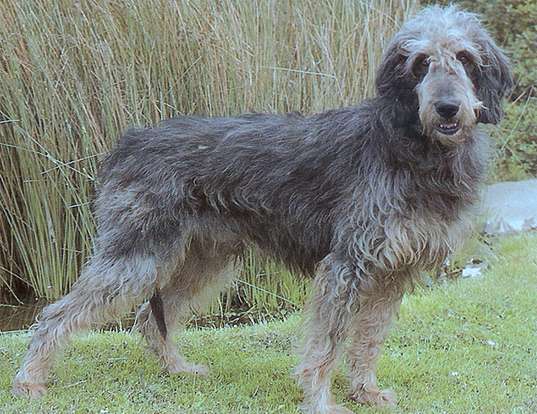
Grooming
The Griffon Nivernais’s resilient coat is rarely matted or unclean. It has to be brushed and bathed seldom, no more than once a week. Some owners could become irritated if their coat still appears disheveled even after giving it a good, long brushing! Most significantly, regular examinations and cleanings of the Griffon Nivernais ears are required. They risk getting ear infections (otitis externa) if they don’t have this.
Potential Health Problems of Griffon Nivernais
Hip Dysplasia
A relatively common orthopaedic condition, hip dysplasia results from the development of hip joints that are not formed correctly. Affected dogs will become progressively lame and uncomfortable on their hind limbs.
Progressive Retinal Atrophy (PRA)
PRA is a progressive loss of vision that occurs due to the destruction of the rods and cones within the eye. It is an inherited disease that currently has no treatment or cure. Usually dogs will show signs of ‘night blindness’ early on in the course of the disease before going completely blind.
Ear Infections
It is the fate of many hunting dogs, particularly those with long and droopy ears, that they are more prone to developing ear infections than the average canine. In the first few days of an infection, an owner may notice the dog shaking his head more than usual, or scratching at his ear from time to time.
As the condition progresses, it is likely that the owner will become aware of a bad smell and, on examination, will see that the dog’s ear is red and full of discharge or waxy debris. Some dogs may even seem unwell and go off their food. Most ear infections can be promptly treated with a course of medicated drops.
Conclusion
In conclusion, the Griffon Nivernais stands as a captivating and versatile breed with a rich history rooted in the scenic landscapes of France. From its origins as a skilled hunting companion in the Nivernais region, this breed has evolved into a loyal and affectionate family companion, embodying a unique blend of intelligence, independence, and courage.
READ ALSO
- Bullmastiff Brindle: The Unique World of Bullmastiff Brindle Breed
- Spanish Mastiff Puppies: A Complete Look at This Majestic Breed’s Beginnings
- Black Irish Setter Dog: Discovering the 4 Comprehensive Coal Beauty of the Setter Breed
- Fluffy French Bulldog Breed Information, History, 6 Comprehensive Body Characteristics, Behavior And Caring
- Jagdterrier Dog Breed Information – 6 Superb Physical Characteristics And Facts
FAQs
What are the characteristics of a Griffon Nivernais?\
The Griffon Nivernais tends to have an affectionate temperament with its family, but it can be somewhat reserved around strangers. A stubborn streak also can be part of this dog’s personality, complicating training at times. Plus, the breed is known for its vocal nature, though that can vary by individual dog.
What is griffon known for?
The hardworking Wirehaired Pointing Griffon, renowned as the “supreme gundog,” is known for the harsh, low-shedding coat the breed is named for. Outgoing, eager, and quick-witted, Griffs are incomparable in the field and loving at home.
What does a Griffon eat?
Gryphons are predators and eat meat, though modern-day gryphons are semi-omnivorous – they still have a diet that consists mostly of meat, but they supplement it with fruits, vegetables, and some grains. However, sugar makes them lethargic and too much will make them very sick.

